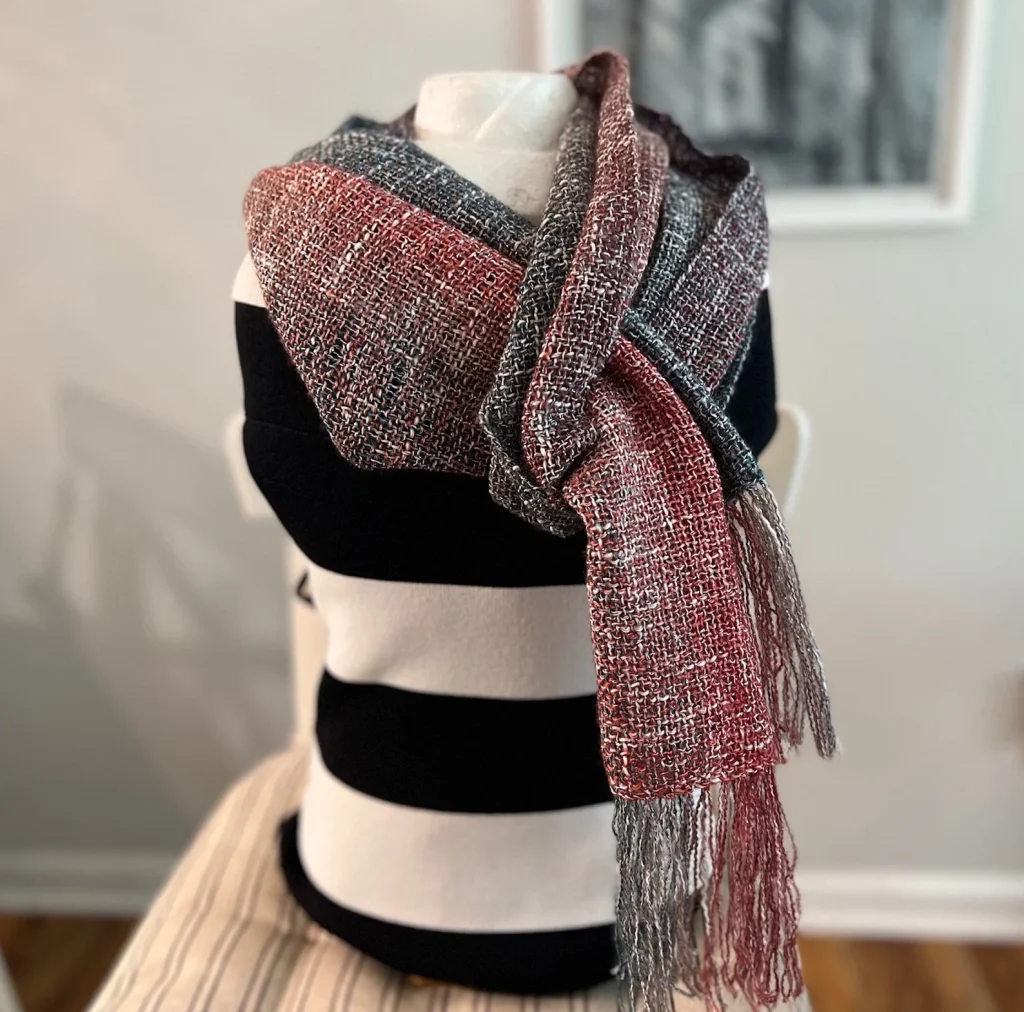News
How Handwoven Scarves Contribute to Sustainable Fashion
Sustainability is no longer just a trend but a necessity in the fashion industry. As consumers become more conscious of their purchasing choices, handwoven scarves offer an ethical alternative to mass-produced fashion. Here’s how they contribute to the larger sustainability movement:
Eco-Friendly Materials: Many artisans choose to work with natural fibers like cotton, wool, and bamboo, which are biodegradable and environmentally friendly. These materials, often sourced locally, have a smaller carbon footprint than synthetic alternatives. The use of natural dyes further reduces environmental impact, ensuring that each scarf is as kind to the planet as it is to its wearer.
Slow Fashion: Handwoven scarves are emblematic of the slow fashion movement, which emphasizes quality over quantity and durability over disposability. Rather than buying into the fast fashion cycle of constant consumption, consumers who invest in handwoven scarves are purchasing timeless, long-lasting accessories. The high quality of the craftsmanship ensures that these scarves can last for many years, reducing the need for constant replacement.
Support for Local Economies: By purchasing handwoven scarves from artisans or small cooperatives, consumers directly support local economies. Many artisans come from rural or economically disadvantaged areas, and the money spent on their work helps sustain their craft and livelihoods. It also helps preserve traditional weaving techniques that have been passed down through generations.
Durable and High-Quality Products: Unlike mass-produced scarves, which often lose their appeal or degrade over time, handwoven scarves are designed for longevity. The materials used are chosen for their durability, ensuring that the scarf remains in excellent condition for years. This long lifespan is a key feature of sustainable fashion, as it helps curb the cycle of disposable, low-quality products.
The Growing Demand for Handwoven Scarves
As we approach 2025, the demand for handwoven scarves continues to grow. There are several reasons for this increased interest:
Rise of Conscious Consumerism: More consumers are looking for fashion choices that reflect their values. Conscious consumerism, which involves buying products that are ethically made and environmentally friendly, is on the rise. Handwoven scarves fit perfectly within this trend, offering a sustainable alternative to mass-produced fashion.
Desire for Unique, One-of-a-Kind Pieces: In a world where fast fashion often dominates, many people are looking for unique, one-of-a-kind accessories that help express their individuality. Handwoven scarves are, by nature, unique. No two pieces are exactly alike, which makes them appealing to those who want to stand out with an accessory that’s different from what you find in every high-street store.
Customization Options: The ability to customize handwoven scarves is another reason for their growing popularity. Artisans often offer personalized designs, allowing customers to choose specific colors, patterns, or even add embroidery. This level of customization creates a more personal connection to the product, as each scarf can be tailored to the buyer’s preferences.
Celebrity and Influencer Influence: Celebrities and influencers continue to promote ethical fashion choices, including handwoven and artisanal products. As more prominent figures showcase handwoven scarves in their outfits, these accessories gain attention from a wider audience. Social media platforms, particularly Instagram, have become valuable spaces for artisans to showcase their work and reach potential customers.
Handwoven Scarves in the Fashion Industry
While handwoven scarves have always been a staple in artisan fashion, they are increasingly being embraced by mainstream designers. Many high-end fashion houses are incorporating handwoven pieces into their collections to highlight craftsmanship and artistry. By featuring handwoven scarves, these designers are elevating them from niche accessories to luxury fashion items. This shift in perspective has made handwoven scarves not only desirable but also highly sought after by fashion-forward individuals looking for high-quality, sustainable accessories.
Some of the luxury brands have even started to collaborate with artisans to produce handwoven scarves for their collections. These collaborations provide artisans with an opportunity to showcase their work on a global scale while also bringing traditional weaving techniques to a broader audience. For consumers, this is an opportunity to own a piece of luxury fashion that also supports ethical production practices.
Handwoven Scarves in Modern Fashion Trends
As the fashion world continues to evolve, handwoven scarves are becoming more integrated into contemporary fashion trends. Some of the ways handwoven scarves are being incorporated into modern fashion include:
Layering and Statement Accessories: Handwoven scarves are perfect for layering over other clothing items, such as dresses or shirts, to create depth and interest in an outfit. Whether draped over the shoulders or wrapped around the neck, handwoven scarves can elevate any outfit. They are also becoming popular as statement accessories that bring attention to minimalist outfits.
Boho-Chic Style: Handwoven scarves have long been a favorite in the bohemian style. Their colorful patterns, fringe details, and rustic feel align perfectly with the carefree, natural aesthetic of boho fashion. In 2025, this style continues to dominate festivals and street fashion, with handwoven scarves being a must-have accessory for anyone embracing the boho lifestyle.
Functional and Fashionable: Modern handwoven scarves are not only beautiful but also functional. Many scarves feature additional features like pockets or hidden compartments, making them as practical as they are stylish. These scarves serve as both fashion accessories and practical pieces of clothing, allowing wearers to enjoy the best of both worlds.
Where to Find Handwoven Scarves
Handwoven scarves can be found in a variety of places, both in physical stores and online. Many artisans sell their creations through local boutiques, artisan markets, and online marketplaces like Etsy. Shopping directly from artisans ensures that the scarf is crafted with care and authenticity, and it supports the artist’s livelihood.
In addition to artisan shops, you can also find handwoven scarves at sustainable fashion boutiques, where they are often sold as part of eco-friendly clothing lines. Many luxury fashion stores also carry handwoven scarves, especially as these accessories become more integrated into high-end collections.
For those looking to create their own custom handwoven scarves, some artisans offer weaving classes or online tutorials, allowing individuals to learn the craft and create their own personalized accessories.
Conclusion
Handwoven scarves represent the fusion of traditional craftsmanship, modern fashion, and sustainable living. As consumers become more mindful of their fashion choices, these scarves have risen to prominence as both a symbol of luxury and a nod to ethical fashion. Whether crafted from natural fibers or blended materials, handwoven scarves provide warmth, beauty, and a deeper connection to the artisans who create them.
In 2025, the handwoven scarf continues to be a symbol of quality, artistry, and individuality. It’s no longer just an accessory, but a statement piece that embodies a growing movement toward conscious consumption and sustainable fashion. As demand for unique, artisanal products continues to rise, handwoven scarves will undoubtedly remain an integral part of modern wardrobes, valued for their craftsmanship, versatility, and timeless appeal.

